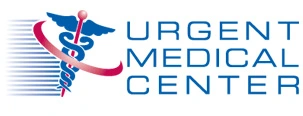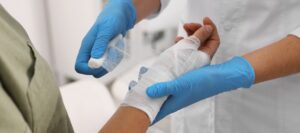How To Know If Your Cholesterol Level Is Dangerous
You hear people talking about cholesterol all of the time, many might be complaining that they have high cholesterol, while otherscan’t produce enough cholesterol. So what really is cholesterol? Cholesterol is waxy, fatty-looking substance swimming through your bloodstream, while many mistake all cholesterol as bad; your body actually needs a certain level of cholesterol to remain healthy. Your liver and cells make 75% of the cholesterol found in blood, although your body needs a little help diet-wise to produce appropriate levels of cholesterol. Family health history and your biological genes also play a big role. High levels of bad cholesterol will raise your risk for heart attack, stroke, and heart disease. Read More.
mistake all cholesterol as bad; your body actually needs a certain level of cholesterol to remain healthy. Your liver and cells make 75% of the cholesterol found in blood, although your body needs a little help diet-wise to produce appropriate levels of cholesterol. Family health history and your biological genes also play a big role. High levels of bad cholesterol will raise your risk for heart attack, stroke, and heart disease. Read More.
Types of Cholesterol
Not all cholesterol is “bad;” here we provide answers to the different types of cholesterol you should regularly have checked.
“Good cholesterol” (HDL)
A healthy HDL reading actually helps combat a “bad” cholesterol reading. High HDL levels help prevent heart attacks from occurring, while low levels of HDL increase your risk of developing heart disease. It is believed that HDL moves bad cholesterol away from sensitive arteries, and instead pushes them towards the liver where these toxins can be filtered out of the body.
What is considered a normal HDL cholesterol level? A reading of 60 mg/dL or above is considered a healthy level of HDL, while anything below 50 mg/dL for women and 40 mg/dL for men is considered low.
“Bad cholesterol” (LDL)
LDL is the “bad cholesterol” in your body because it attaches to the walls of your most vital arteries. LDL builds up in your arteries in the form of a plaque-like substance that can be hard and thick, and tends to take away the natural flexibility of arteries. If too much LDL is allowed to build up over time, a blood clot can form blocking off the artery (and blood supply) to your brain or heart, presenting the risk of heart attack or stroke. A healthy diet that contains limited fatty foods, trans fats, saturated fat, and dietary cholesterol helps keep bad cholesterol at bay. If you avoid fatty foods and still have high cholesterol, you may have inherited high LDL through your family genes.
What is considered a normal LDL cholesterol level? Healthy LDL levels should register below 100 mg/dL. Anything above 160 mg/dL is considered high, and 190 mg/dL or above puts you at high risk for heart attack or stroke.
Triglycerides
When you have your cholesterol checked you also have your triglycerides calculated. Triglycerides are fat made by your body that can be elevated if you are overweight, inactive, a smoker, drink excessive amounts of alcohol, or eat 60% of your diet in carbohydrates. High triglycerides are often associated with diabetes and heart disease.
What is considered a normal triglyceride level? You want your triglycerides to read less than 100 mg/dL, although up to 150 mg/dL is considered normal with our modern day diets. 150-499 mg/dL are high, and anything above 500 mg/dL is extremely high. A reading of 150 or higher puts you at much greater risk for metabolic syndrome, which further exposes your risk to heart disease and diabetes. Additional Readings
Cholesterol Levels– What Do They Really Mean?
Having your cholesterol measured is the only way to find out what levels your body is currently working with. The National Cholesterol Education Program actively seeks to educate the public on the dangers of high cholesterol; they recommend everyone 20-years and older should have their cholesterol level checked once every five years. In order to obtain an accurate reading, you must fast, consuming no food or sugar filled liquids, for 12 hours prior to your cholesterol test. Results are interpreted by how many milligrams of cholesterol you have for every deciliter of blood. Your “good” and “bad” cholesterol, along with your triglyceride levels are all plugged into one equation to determine your ultimate cholesterol level.
Your overall cholesterol will fall into 1 of 3 categories:
200 mg/dL or less — This is the range where you want to be, your chances of heart disease are lower so long as you stay below 200.
200-239 mg/dL — This range of cholesterol is getting high and should be a call to action to start changing your lifestyle, or working with a doctor to find a plan that works for you.
240+ mg/dL — When levels reach 240+ your chance for developing coronary heart disease more than doubles; this is very high cholesterol and shouldn’t be taken lightly, your life is too important.
Further Information
How To Improve Your Cholesterol Level
There are a number of ways you can actively improve your cholesterol. For starters, try exercising; when you exercise your body naturally produces HDL (the good kind of cholesterol). Incorporating regular walks, yoga, or other types of physical activity into your everyday life can help ward off “bad cholesterol.” Pair your physical efforts with a healthy diet free of animal fats, which provide the body with an excess of “bad” cholesterol. In some cases you might live a healthy lifestyle and still have high cholesterol, when biological genetics play a role there are medications available to help regulate your cholesterol levels.
At Urgent Medical Center we want all of our patients to live a long and healthy life, our attentive and compassionate medical staff will test your cholesterol levels and create a suitable plan of action tailored just for you.





